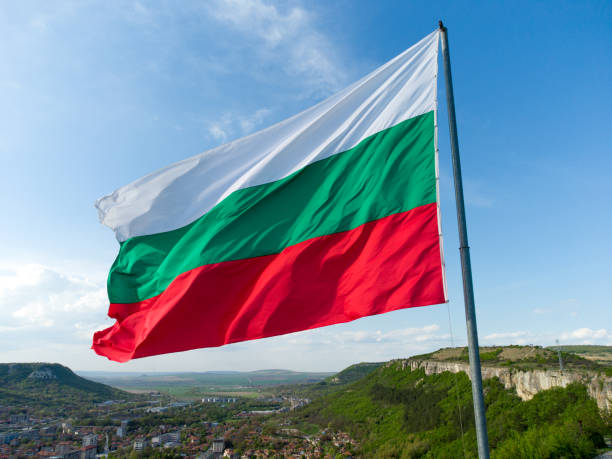With so many different types of schools and regulations in the three main communities, Belgium’s school system can be confusing at first. A large number of Belgian children receive an education in free or subsidised state or religious schools, but parents may also favour private international schools, particularly expats. There are plenty of options, so you can find what your child needs, whether they are only beginning their education or wanting to finish internationally recognised secondary exams. School choice is not limited to a specific area, so you are able to pick any location. In some cases, all of the places at the closest school may already be taken.

Preschool education in Belgium
Children don’t need to go to preschool, but it can help in many ways. Because of public funding, working parents can send their children to nurseries and pre-schools at no cost. At the same time, even though official lessons are not common, children are getting ready for school in both learning and social skills through play-based activities. Because of this, more than 90% of young children go to a pre-school in Belgium. You should also know that getting a place in a popular preschool may not be easy because space is limited.
For babies and toddlers up to 2.5 years, there are nurseries and kindergartens. (Kleuteronderwijs in Dutch, Enseignement maternelle in French) are offered to them once they reach 2.5 years, until they start school. Many kindergartens are connected with a neighbourhood primary school, which supports an easy transition to school life.
Primary education in Belgium
It is a requirement that children go to primary school, lagere onderwijs in Dutch and enseignement primaire in French from age six to 12. The departments of education in each region are responsible for deciding on requirements and choosing a curriculum.
Making sure the pace of education is appropriate is important for Belgium. Assessments are given at every level of education to see if children are prepared to advance. Part of this testing may involve children repeating a year, and it is viewed as normal without any negative effects. When they finish primary school, children will be awarded a certificate known as Certificat d’Etudes de Base (CEB) or Getuigschrift van Lager Onderwijs. It is important to have this certificate when starting at secondary school.
Public primary schools in Belgium
All people in the US are entitled to free public primary education. You may have to pay for a range of learning materials, though some are subsidised, and also for excursions. Mornings are about literacy and math, and other subjects, such as music and history, are often taught in the afternoon. Wednesday afternoons are often free. British schools give significant importance to learning foreign languages. During the final years of primary school, the French-speaking community must study Dutch or German, while the Dutch-speaking community learns French.
Private primary schools in Belgium
There are various private, international, and alternative schools for parents and children who prefer them. Private primary schools may be divided into several groups, which include:
Method and Montessori schools
Provide a different way of learning that emphasises creativity and the overall growth of children.
International schools
Families can pick British, American, European, or other international-based curricula.
Religious schools
As an example, Catholic or Jewish schools. A lot of the time, there are subsidies available for this.
Secondary education in Belgium
Belgium’s system for secondary education: In Belgium, secondary education is referred to as secundair onderwijs in Dutch. Les Français doivent aller à l’enseignement secondaire de 12 à 18 ans. After reaching the age of 16, students are allowed to study part-time and participate in vocational or technical courses.
Public secondary schools in Belgium
Every pupil is allowed to attend state schools without charge, although they may be expected to pay for textbooks.
Each private school has its own teaching style, while international schools make it possible to earn certificates that are recognised all over the world.
International schools: teach students using English, American, Nordic, and European educational systems. In different systems, the types of subjects, the way they are taught, and the qualifications sought are all different. For example, students at UK secondary schools work towards GCSES and A-Levels. Schools that follow the International Baccalaureate, including BEPS International School, are widely chosen by international families.
Subsidised private schools: Plus, there are schools that have a religious affiliation. There are many of these schools in Belgian secondary education, mainly in Flanders.
Montessori Schools: Even though secondary education is not common, the International Montessori School in Tervuren is one of the few that provides it, starting with the IB program for students from age 11.
Steiner Schools: Make sure education includes the development of the mind, hands, and creativity. Learners in secondary education develop skills in critical thinking.
Other private schools provide different strategies for teaching students. Sudbury School in Ghent gives children autonomy over their education, based on the U.S. model, while Le Labo in Brussels is known for its sports education in French.
Graduating in Belgium
Children may not be very happy with how the assessment is carried out in Belgium. Testing is done regularly in secondary education, and it is quite tough. On finishing secondary education, students in the Netherlands or France receive the Diploma van Secundair Onderwijs or Certificat d’Enseignement secondaire supérieur général, technique ou artistique. The certificates make it possible to continue studying at the next level.
You may also find these articles helpful
Frequently Asked Questions on Belgium
Belgium immigration quotas and caps – what you need to know
